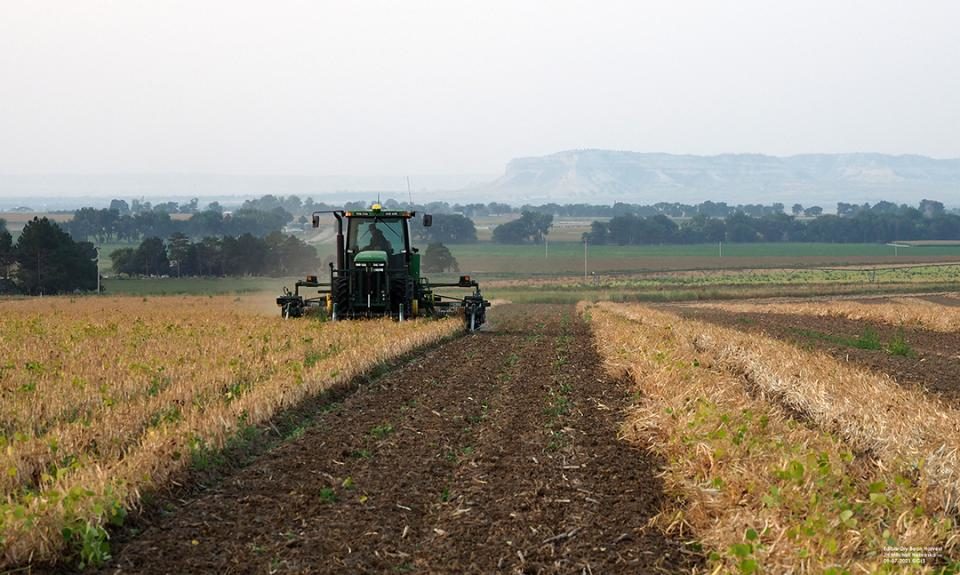This season’s dry edible bean harvest is underway in the tri-state region of the Nebraska Panhandle, southwest Nebraska, eastern Wyoming and northeastern Colorado.
The overall crop in the region looks very good, despite severe weather and some hail earlier in the year across the growing region. Average yield is expected to be around 2,400 pounds per acre or approximately 40 bushels per acre.
Dry edible beans are harvested using two different methods. The more traditional method requires different equipment to make several passes over the field, first to undercut the bean plant roots and place the plants in a windrow to dry.
When the crops reach the desired moisture content, the windrows are combined. Many growers use a traditional combine, and some growers use a Pickett dry edible bean specialty combine.
The downside to this method is the windrows are sometimes blown across the field, splitting the bean pods and scattering the beans. They are also subject to rain and yes, even an early snow, leaving the windrows wet. In that case, the grower may have to “turn” or “lift” the windrows so they dry out, which can lead to increased crop loss in the field. The dry edible bean field is planted in rows when this harvest method will be used.
The other method is to direct-harvest the crop. The bean plant can be desiccated to facilitate even dry-down of the standing crop. Again, when the crop reaches the desired moisture content, it is direct harvested by a combine. The combine usually has a very wide header, up to 40 feet in width.
Precipitation events usually do not pose a problem for direct harvest, as the plants can dry down quickly.
However, there is a greater chance of harvest loss in the field when combining. Dry edible bean plants do not stand upright in the field very well, and the bean pods are lower to the ground. If the combine cannot pick up the lower bean pods, harvest loss results. The dry edible bean crop can be planted either in rows or drilled with this method of harvest.
Once the beans are harvested from the field, they are delivered to the processors (most of whom are either based in Nebraska or have elevators in the area). The processors clean, sort and package the beans.
The packaged beans are then shipped across the nation for distribution to consumers. Approximately 20% of the dry beans are exported to customers outside the United States.
In 2020, nationally, Nebraska was ranked No. 1 in Great Northern dry edible bean production and ranked No. 2 in pinto and light red kidney production. Nebraska growers produce over 1 billion servings of dry beans annually. The dry edible bean production in Nebraska adds $158.4 million to the state’s economy.
You’ve probably had dry edible beans in chili, baked beans or a bean salad. But did you know they can also be used to make brownies, fudge or mashed potatoes? Dry edible beans are an excellent source of fiber, protein and other nutrients.
Some dry edible bean recipes and nutritional information can be found at the Nebraska Extension’s Food website. Type “dry beans” in the search box.






